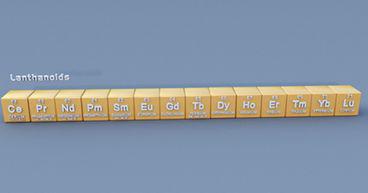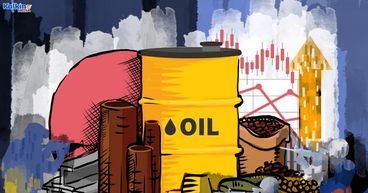Mineral Sands
About
| Index | Price | Change |
|---|
Mineral sands or sometimes referred to as heavy mineral sands contain a concentrated amount of minerals, which are economically important and are heavier than common sand containing quartz. Mineral sand deposits typically contain rutile, ilmenite, zircon and monazite.
Rutile and ilmenite contain titanium, which has several industrial applications. Zircon contains zirconium, while monazite is known to contain rare earth elements.
Minerals found in these sands are derived from igneous (like granite or basalt) or metamorphic (like schist) rocks, which have undergone natural weathering processes. These rocks are then transported through fluvial systems and deposited on beaches, lakes, or rivers. Particularly in coastal areas, processes like wave action and longshore drift, which occur over millions of years, concentrate heavy minerals into amounts that could be economically exploited.
Australia has the largest deposits of mineral sands in the world. It is estimated to have 48Mt of zircon reserves and 27Mt of rutile reserves, the highest in the world, as per data from the Western Australian government’s Department of Mines, Industry Regulation and Safety.
Australia also holds 150Mt of ilmenite reserves, the second-largest in the world, while China holds the world’s top spot for ilmenite reserves.
Frequently Asked Questions
Minerals sands are used for the mining or extraction of heavy minerals found in them, including rare earth elements (monazites), rutile, and ilmenite.
Demand for rare earth elements (REEs) is growing strongly, and many countries have included them in the list of critical minerals. REEs are used in many important industrial applications, including the manufacturing of high-end electronics, advanced warfare equipment and permanent strong magnets.
It is estimated that up to two tonnes of REE, permanent magnets are required in the manufacturing of one wind turbine.
Titanium is used as a feedstock for the production of pigments for colours in paints, paper and plastics.
Wet or dry mining methods can be employed for excavating mineral sand deposits. Both methods include mining deposits by the removal of topsoil, subsoil, and clay from the sand containing minerals and then processing it to separate high-value heavy minerals sands.
Mineral sand deposits are excavated using front-end loaders, trucks, excavators, scrapers, and other conventional earth-moving machinery. After the removal of sand deposits, the overburdened material is replenished (often within a year), and the land is then improved for uses other than mining.
Wet mining includes dredging mineral sands from below the surface of a pond built for extraction.
Australia is well-endowed with mineral sands, which are found in every state in the country. They are found in deposits from Cape York in Queensland, along the coast of eastern Australia, and central New South Wales. In Victoria, large relics or old beach deposits could be seen. Such deposits could also be found in south-western NSW, including Ginkgo and snapper deposits.
According to data from the Department of Mines, Industry Regulation and Safety of WA, Australia is estimated to have 48Mt reserves of zircon- the highest in the world and constitutes around 64% of the globally known reserves. The country is endowed with 27Mt of rutile, nearly 46% of globally known reserves, and also the highest in the world.
The country ranks second in the world for ilmenite reserves, estimated to be around 150Mt.
Mineral sands typically contain titanium oxide and zircon, along with monazite. Xenotime can also be found in some deposits.
Monazite and xenotime could be used to extract rare earth metals, and they may also contain thorium, making them commercially unappealing. This is because of the regulatory issue for the safe disposal of radioactive materials, making the entire processing operation costlier. Thus, normally, monazite is dumped back into the mine with tailings.
Nearly 10% of heavy minerals account for mineral sand deposits in Australia. Of this 10%, nearly 1-3% are monazite, which typically comprises 0.1-0.3% uranium and 5-7% radioactive thorium.
When monazite is concentrated, radioactivity levels may be high if decay products of uranium or radioactive thorium are present in minerals.





